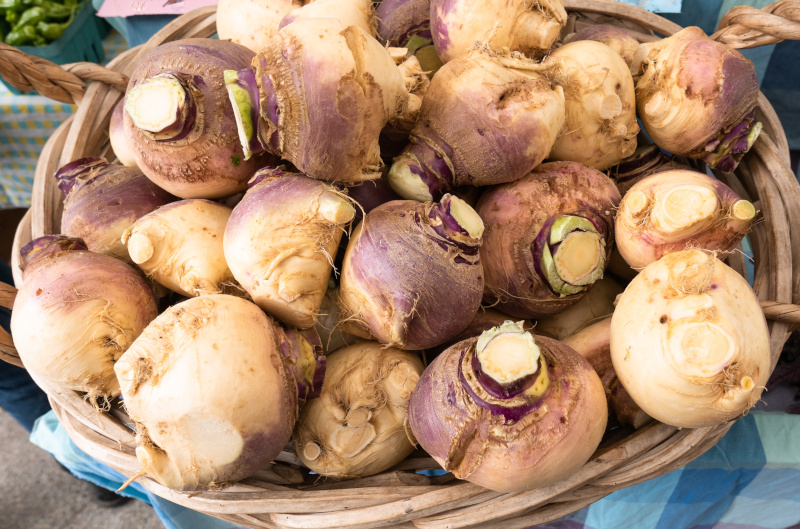How To Grow Swedes.
Swedes are also known as rutabagas in some parts of the world, or “neeps” in Scotland, where they’re a traditional accompaniment to haggis. They’re a versatile and nutritious vegetable which can easily be grown in your own garden. With their distinctive flavour and a range of culinary uses, swedes are a popular choice among British gardeners. In this guide, we’ll walk you through the steps to successfully grow swedes in your garden, ensuring a bountiful harvest of these delicious root vegetables.
When To Sow Swedes In The UK
Swedes thrive in cool weather conditions, making early spring or late summer the ideal times to sow the seeds. By planting during these periods, you allow the swedes to mature during the cooler months, resulting in sweeter and tastier roots.
Best Locations For Growing Swedes
Choose a sunny spot in your garden with well-draining soil for your swede patch. Prior to planting, prepare the soil by removing any weeds and incorporating organic matter such as compost. This will provide the swedes with essential nutrients and promote healthy growth. Swedes do best in a fairly neutral soil, with a pH between 7.0 and 7.4.
Sowing Swede Seeds
Sow the swede seeds directly into the prepared soil. Aim to space them approximately 30 centimetres (12 inches) apart, with rows set around 45 centimetres (18 inches) apart. Plant the seeds at a depth of about 2 centimetres (3/4 inch) and cover them gently with soil.
Thinning
Once the swede seedlings have grown a few centimetres tall, thin them out to ensure adequate spacing. Thin the plants so they are approximately 15 centimetres (6 inches) apart, allowing enough room for each swede to develop fully.
Watering
Maintain consistent soil moisture for your swedes by watering them regularly. It is important to keep the soil moist but not waterlogged. Water deeply whenever the top inch of soil feels dry. Be mindful not to overwater, as swedes can be prone to rot in excessively wet conditions.
Fertilising
After approximately one month of growth, provide your swedes with a balanced fertiliser application. Follow the instructions on the package of a general-purpose fertiliser to ensure the correct dosage. This will supply the necessary nutrients to support their healthy development.
Weed Control
Regularly weed the area around your swede plants to prevent unwanted competition for nutrients and water. By keeping the surrounding soil clear of weeds, you give your swedes the best chance to thrive.
Pests and Diseases
Swedes are generally resistant to many pests and diseases. However, keep an eye out for common threats such as cabbage root fly and clubroot. Swedes are part of the brassica family, so can be vulnerable to damage from pigeons, particularly at times of the year when other food sources are scarce, so keep a close eye out for foliage damage and net if necessary. If your garden or allotment is acessible to rabbits, also be aware that they may chew off the foliage and exposed tops of the roots, especially as summer ends and leafy foliage starts to die back.
When To Harvest Swedes
Swedes typically take around 12 to 16 weeks to mature. Harvest them when the roots reach a diameter of approximately 10 to 15 centimetres (4 to 6 inches). Gently lift the swedes from the soil using a fork or spade, taking care not to damage the roots.
Growing swedes in your garden can be a rewarding experience. By following these steps, you can cultivate healthy and flavourful roots, which are great either mashed as a side dish, or as a hearty addition to winter stews and casseroles. Embrace the cool-season nature of swedes and enjoy the process of tending to your garden as you eagerly anticipate the harvest of these versatile root vegetables.




One thought on “How To Grow Swedes.”